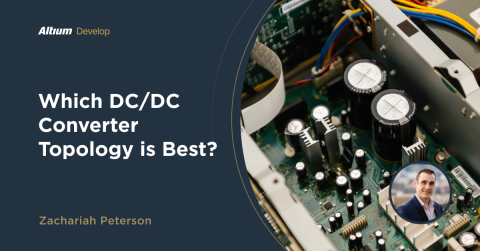How is Your Design Affected by PCB Edge Clearance?
We are often tasked with fitting a plethora of things into a small window of space. Whether it be cramming loads of info into our heads moments before a final exam, doing all twenty sightseeing activities into an eight-hour “vacation day,” or strategically stacking our Thanksgiving plates full of deliciousness, we must be aware of the boundaries given, and how each unique item interacts with the items surrounding (heaven forbid the mashed potatoes to touch the fruit salad). Whatever your case may be, we can cleverly relate our past experiences to PCB design theory; more specifically, to PCB component-to-edge clearance and how it affects your design.
The day and age of room-sized circuit boards are all but gone. Components are getting smaller and smaller with each passing day, but PCB board edge clearance problems remain. How on earth are we supposed to fit 100 components onto a board no larger than a quarter?! This may be a bit of an exaggeration, but the fact remains; the issues of PCB edge clearance are becoming more and more relevant. We are fortunate enough, however, to have a handful of resources at our disposal when PCB board edge clearance (inevitably) becomes a topic of consideration. Are there other things to consider like the solder and solder mask? Let us discuss it!
PCB Component to Edge Clearance and The Courtyard Manufacturing Zone
As the heading may suggest, this will not examine the zone in which manufacturing is done in a lovely-looking courtyard just outside of a million-dollar estate. Instead, the courtyard manufacturing zone is defined by our trusty companion, the IPC-7351A. If you are not familiar with this document, it is simply a list of generic requirements for surface mount design when considering PCB design best practices. We may often find ourselves referring back to documents similar to these through a design (which is exactly what is expected!).
The courtyard manufacturing zone is defined as the area around a single component in which to “keep out.” This includes other components, hardware, and especially the board’s edge. This area is crucial to abide by since we must consider the actual manufacturing portion of the design. Sure we could fit the cap butted right up to this resistor, but when the time comes to assemble the circuit board, you will be sorely saddened by the difficulty of such a feat.
PCB Edge Clearance Mounting Hardware Considerations
Another area of consideration (which also will be affected by the courtyard manufacturing zone) is the location of our mounting hardware. Rarely we will be designing PCBs without the intention of mounting them. This is often a step that fails to be considered especially in the early prototyping stages where loose boards and wires are all that are required. Mounting screws, washers, and other wonky forms of fasteners are some common parts you may be surprised by later on in the design.
Sometimes your mounting scheme will even impede on the circuit board's edge, perhaps on slots or rails. This will be even more cumbersome when it comes to PCB board edge clearance as the ‘edge’ of the board isn’t the edge of your clearance considerations anymore. So do yourself a huge favor and keep your mounting hardware considerations in the back of your mind as the design progresses; it will make PCB edge clearance much less painful.
Manufacturing Limitations and Final Considerations of PCB Edge Clearances
As you near the end of your prototyping stage and begin to discuss production plans with a manufacturing plant, you may find yourself caught off guard by the limitations presented about your PCB design. As detailed as your hand may be and as precise as you may think machines to be, there still exist limitations to what a big, bad PCB placement machine can do. However, with today’s extremely high level of accuracy in almost all areas of technology and manufacturing, this step is not as crucial but is still wise to consider. Be sure to acquire these limitations from possible manufacturers as early as possible to save yourself a late-in-the-game redesign.
Keeping in mind the courtyard manufacturing zone with components’ “keep out” zone, steering clear of mounting hardware of all shapes and sizes, and attaining limitations in production with your manufacturer early on will keep your design free and clear of any area disputes as well as keep your customers very happy with how tiny their new watch will be. With the increase in demand for the decrease in printed board size, we will constantly be battling borders from one component to the next while trying to stay within the lines of our board’s edge. PCB component-to-edge clearance will continue to be an important topic for any designer.
Whether it is green beans fighting for territory with the sweet potatoes or integrated circuits keeping a wide berth from high current caps, space will continue to be a concern in your life. The best-printed circuit board design software will be able to assist you in smart component placing, PCB edge clearance, and visually display sources for potential errors and problems within your PCB Design. If you’re looking to win that constant battle more effectively, consider Altium Designer with its interactive routing technology and manufacturing output systems which will help you give your designs a starling finish.
Would you like to find out more about how Altium Designer can help you keep your components well within your PCB edge clearances? Talk to an expert at Altium Designer.










